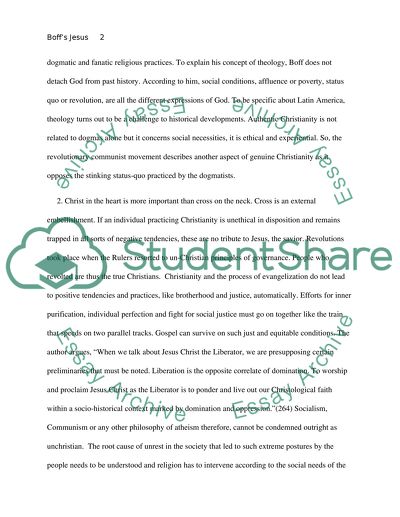Cite this document
(“Analysis of Leonardo Boff's Jesus Christ Book Report/Review”, n.d.)
Analysis of Leonardo Boff's Jesus Christ Book Report/Review. Retrieved from https://studentshare.org/religion-and-theology/1452737-analysis-of-leonardo-boffs-jesus-christ
Analysis of Leonardo Boff's Jesus Christ Book Report/Review. Retrieved from https://studentshare.org/religion-and-theology/1452737-analysis-of-leonardo-boffs-jesus-christ
(Analysis of Leonardo Boff'S Jesus Christ Book Report/Review)
Analysis of Leonardo Boff'S Jesus Christ Book Report/Review. https://studentshare.org/religion-and-theology/1452737-analysis-of-leonardo-boffs-jesus-christ.
Analysis of Leonardo Boff'S Jesus Christ Book Report/Review. https://studentshare.org/religion-and-theology/1452737-analysis-of-leonardo-boffs-jesus-christ.
“Analysis of Leonardo Boff'S Jesus Christ Book Report/Review”, n.d. https://studentshare.org/religion-and-theology/1452737-analysis-of-leonardo-boffs-jesus-christ.


